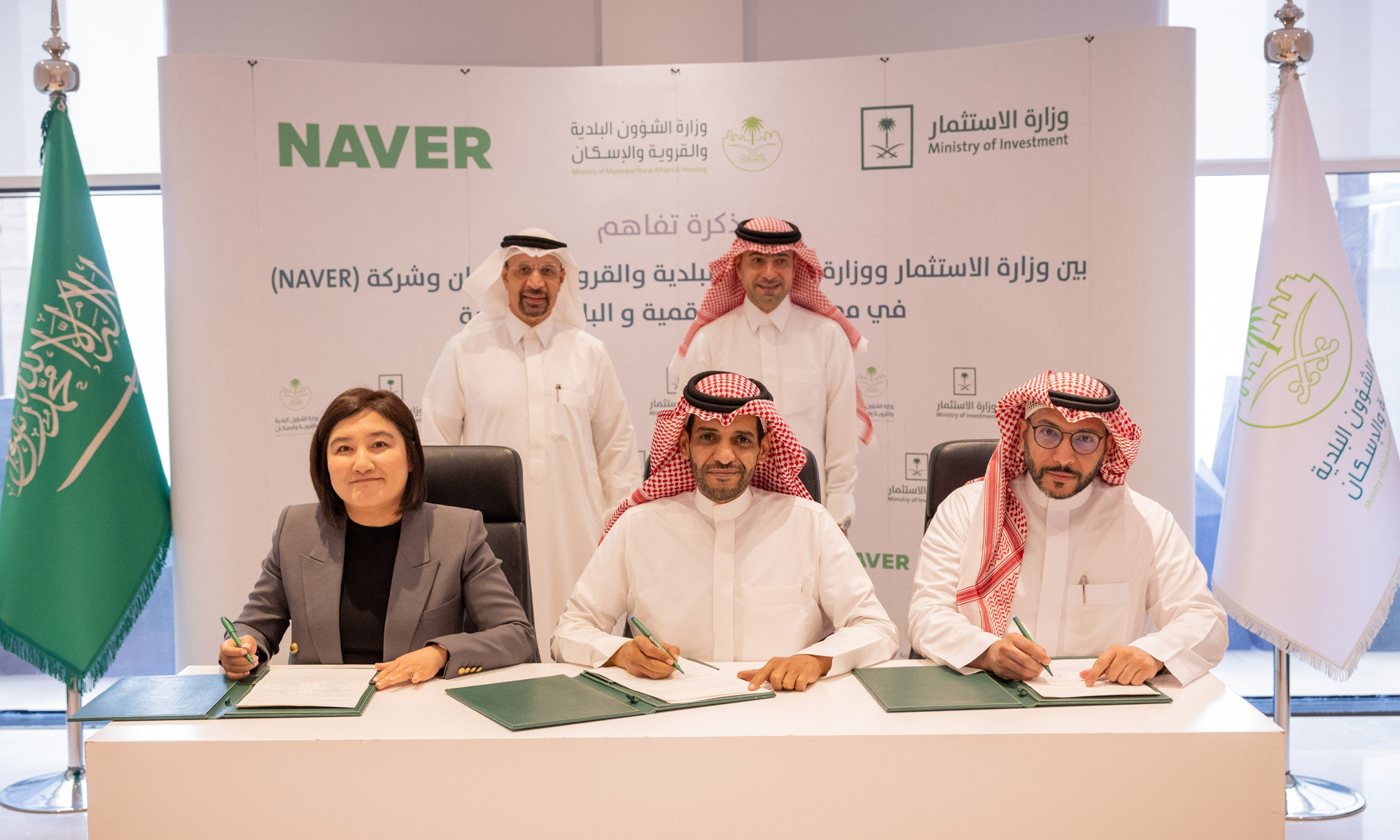News
Saudi Arabia Plans Digital Twins For 5 Cities, Including Mecca
The project involves the creation of a cloud-based platform that will become central to the Kingdom’s smart city project.

South Korean tech company Naver has signed a contract with the Saudi Arabian Ministry of Municipal, Rural Affairs and Housing (MOMRAH) to build and administer digital twins for five of the country’s biggest cities: Riyadh, Medina, Jeddah, Dammam, and Mecca.
The news comes after a visit from South Korean President Yoon Suk Yeol, who arrived in the Kingdom to discuss deepening economic ties, explaining that “If South Korea, which has cutting-edge technologies and a successful experience of industrial development, joins hands with Saudi Arabia, with its abundant capital and growth potential, we can create synergy stronger than any other nation”.

Naver has already signed a memorandum with MOMRAH to support Saudi Arabia’s digital transformation. Discussions have also taken place with Majed Al Hogail, Saudi Arabia’s Minister of Housing, on digitizing other aspects of city planning, transportation, and public safety.
The digital twin program reflects ongoing efforts to boost decision-making and improve digitization using AI, robotics, and cloud-based solutions. The project will be pivotal in the development of smart city infrastructure and will be used for a wide variety of tasks, including urban planning and flood monitoring.
Also Read: Saudi Arabia Launches Summer 2024 eSports World Cup
“Leveraging Naver’s globally competitive technologies, we aim to spearhead the second wave of export boom to the Middle East. With this project as a starting point, Naver will also act as a bridge for Korean IT startups entering the Middle Eastern market,” announced Chae Seon-ju, President of ESG and External Policy at Naver.
Korean company Naver emphasized that digital twins platform could become the foundation for numerous technologies and services in what could become a continually evolving project. South Korean and Saudi startups could also use the open platform cloud software for urban water management, real estate services, robotics, autonomous driving applications, and traffic planning.
News
Google Releases Veo 2 AI Video Tool To MENA Users
The state-of-the-art video generation model is now available in Gemini, offering realistic AI-generated videos with better physics, motion, and detail.

Starting today, users of Gemini Advanced in the MENA region — and globally — can tap into Veo 2, Google’s next-generation video model.
Originally unveiled in 2024, Veo 2 has now been fully integrated into Gemini, supporting multiple languages including Arabic and English. The rollout now brings Google’s most advanced video AI directly into the hands of everyday users.
Veo 2 builds on the foundations of its predecessor with a more sophisticated understanding of the physical world. It’s designed to produce high-fidelity video content with cinematic detail, realistic motion, and greater visual consistency across a wide range of subjects and styles. Whether recreating natural landscapes, human interactions, or stylized environments, the model is capable of interpreting and translating written prompts into eight-second 720p videos that feel almost handcrafted.
Users can generate content directly through the Gemini platform — either via the web or mobile apps. The experience is pretty straightforward: users enter a text-based prompt, and Veo 2 returns a video in 16:9 landscape format, delivered as an MP4 file. These aren’t just generic clips — they can reflect creative, abstract, or highly specific scenarios, making the tool especially useful for content creators, marketers, or anyone experimenting with visual storytelling.
Also Read: Getting Started With Google Gemini: A Beginner’s Guide
To ensure transparency, each video is embedded with SynthID — a digital watermark developed by Google’s DeepMind. The watermark is invisible to the human eye but persists across editing, compression, and sharing. It identifies the video as AI-generated, addressing concerns around misinformation and media authenticity.
While Veo 2 is still in its early phases of public rollout, the technology is part of a broader push by Google to democratize advanced AI tools. With text-to-image, code generation, and now video creation integrated into Gemini, Google is positioning the platform as a full-spectrum creative assistant.
Access to Veo 2 starts today and will continue expanding in the coming weeks. Interested users can try it out at gemini.google.com or through the Gemini app on Android and iOS.


















